�
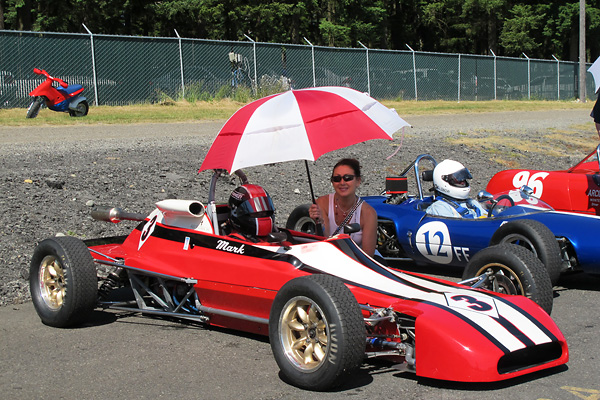
�
�
Mark Weatherup's 1979 Crosslé 35F Formula Ford Race Car
� � Owner: Mark Weatherup� City: New York, NY
� Model: 1979 Crosslé 35F
� Engine: Ford 1600cc four cylinder
� Race prepared by: Roland Johnson�
�
Crosslé Car Company Ltd.
��
John Crosslé built an 1172cc Ford powered racecar for himself in early 1957�
and raced it through two seasons on the grass motorcycle tracks of Northern Ireland.�
From that humble beginning came a series of progressively more successful 1172cc Ford�
class racecars, Formula Junior racecars, Sports Racing cars, and Formula B racecars.�
By the time the Formula Ford class came into existence, Crosslé Car Company Ltd.�
seemed to be focusing its attention on high-powered classes such as Formula A and�
Formula 5000. �
�
Meanwhile, through 1967 and 1968 the Formula Ford class grew. In 1969, Crosslé�
finally joined the long list of Formula Ford manufacturers with the introduction of�
their 16F model. Forty 16F racecars would be produced between 1969 and 1970, of which�
thirteen went to America. These were fairly successful cars right from the beginning:�
Gerry Birrell used a 16F to win the European Formula Ford championship in 1969.�
Crosslé continued Formula Ford production with the 20F, and then found commercial�
success with the chisel-nosed 30F model of 1975/76 which proved popular with driving�
schools, most notably including the brand new Skip Barber Racing School in U.S.A.�
�
�
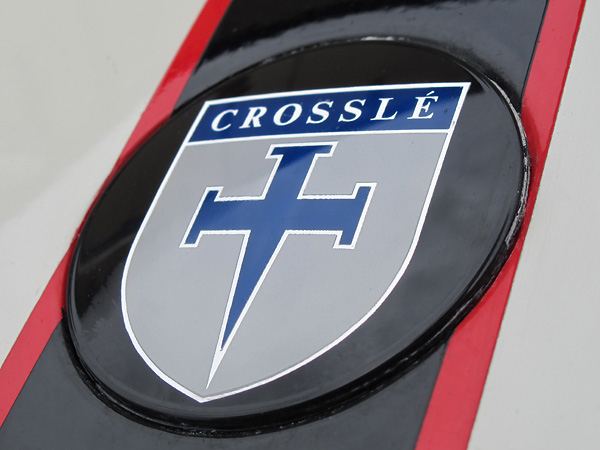
�
CROSSLÉ (pronounced "kroz lee")
�
�
Crosslé's single most popular model was the 32F Formula Ford, of which 140�
were built in 1977/78. Of these, 101 were exported, mostly to the United�
States.�
�
The 35F model was Crosslé's update of the 32F for 1979. It was very similar, with the�
most important difference being bodywork changes around the cockpit to make�
the car more comfortable for larger drivers. 58 were built, of�
which 51 were exported. Twenty-two 35Fs went to the Skip Barber Racing School.�
�
The 32F and 35F share a distinctive wide nose which serves the car well in�
terms of aerodynamic drag and downforce, and improved engine cooling.�
Compared to earlier Formula Fords, the 32F and 35F provided good driver�
protection, particularly in that they included a roll hoop over the�
instrument panel. Out of the box, the chassis isn't especially stiff.�
It lacks any sort of removable brace over or through the engine bay.�
Many owners have strengthened their cars through the middle by adding�
bracing around the cockpit area.�
�
Many successful drivers started their racing careers in Crosslé cars.�
Nigel Mansell owned and raced Crosslé 32F chassis number 37.�
�
Two more iterations of this series of Formula Fords were 1980's 40F�
(30 built, 22 exported) which had a narrower track width for greater�
straight-line speed at some expense of cornering potential, followed by�
1981's 45F (24 built) which returned to the easier-to-drive wide-track�
suspension geometry of the 35F. (There were also Formula Ford 2000�
versions of these car models, called 41F and 46F respectively.) After these,�
Crosslé went to a whole new chassis with inboard-mounted shock�
absorbers and with radiator mounted behind the driver's seat.�
�
 �
�
�
�
�
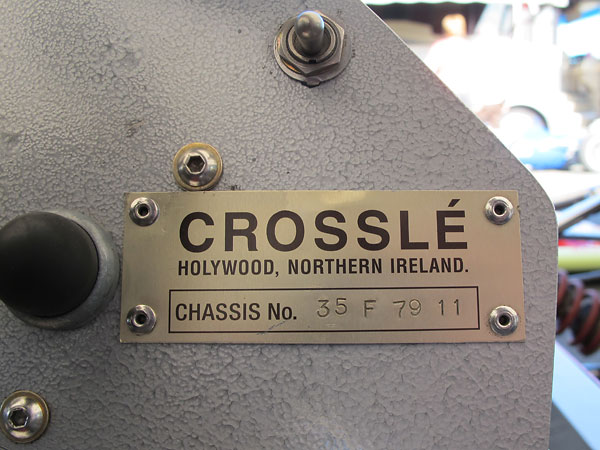
�
Crosslé
�
Holywood, Northern Ireland.
�
Chassis No. 35 F 79 11
�
Features and Specifications
�| Engine: | �Ford Kent 1600cc with aluminum cylinder head, rebuilt by Ivey Engines, Inc. in early 2011.�
Weber 32/36 DGAV carburetor.�
Bosch distributor.�
Pertronix Ignitor breakerless ignition module.�
Bosch blue ignition coil.�
Taylor Spiro-Pro 8mm silicone spark plug wires.�
Titan oil pump.�
Dry sump lubrication system. | �
| Cooling: | �Howe aluminum crossflow radiator.�
Bicknell Racing Products aluminum coolant surge tank (model 570).�
�
| �
| Exhaust: | �Hytech Headers stainless steel tri-Y headers featuring patented anti-reversion chambers.�
(A Coast Fabrication lightweight stainless muffler is used as required to meet sound rules.) | �
| Transaxle: | �Hewland Mk9 4-speed, with reverse.�
CV-jointed half shafts. | �
| Front Susp.: | �unequal length wishbones.�
Penske double adjustable coilover shock absorbers, with remote reservoirs.�
Eibach coil springs.�
Adjustable 9/16" anti-sway bar.�
Alford & Alder forged uprights. | �
| Rear Susp.: | �inverted lower wishbones, single top links, and twin radius arms.�
Penske double adjustable coilover shock absorbers, with remote reservoirs.�
Eibach coil springs.�
Proprietary Crosslé (25F-72/03) magnesium uprights.�
Adjustable 9/16" anti-sway bar. | �
| Brakes: | �(master) dual Girling master cylinders with remote reservoir and remotely adjustable bias bar. � (front) ICP20 leg-mount calipers. Solid rotors. � (rear) inboard mounted. Lockheed calipers. Solid rotors. | �
| Wheels/Tires: | �Panasport 8-spoke aluminum wheels (13x5.5).�
When photographed in 2010: Dunlop Racing "Formula Ford" tires (135/545-13 CR82 front, 165/580-13 CR82 rear).�
When photographed in 2011: Avon "ACB9" tires (135/545-13 front, 165/580-13 rear). | �
| Electrical: | ��
�
(No charging system.) | �
| Instruments: | �MyChron3 XG LOG multi-function display and data acquisition system.�
| �
| Fuel System: | ��
�
Facet electric fuel pump. | �
| Safety Eqmt: | �Willans six point cam-lock safety harness.�
MOMO suede 250mm flat-bottom, cut-off top steering wheel with�
Racetech quick release steering wheel hub.�
FireBottle centralized fire suppression system. | �
| Racing Class: | �Formula Ford. | �
Engine Installation
��
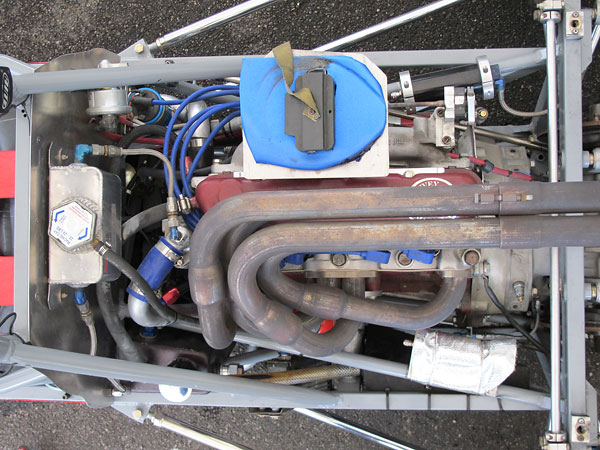
�
Ford Kent 1600cc engine with aluminum cylinder head, rebuilt by Ivey Engines, Inc.
�
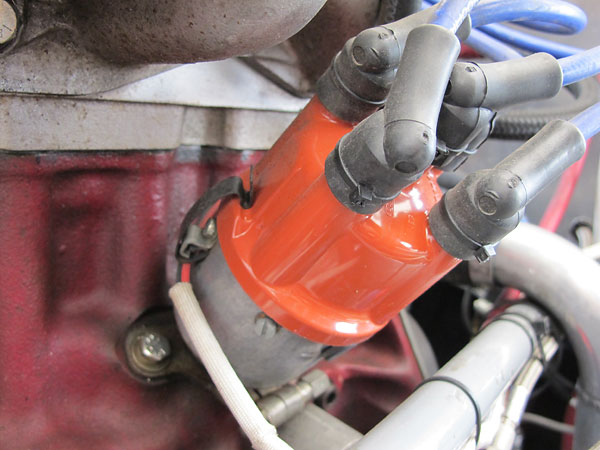
�
The two leads coming out of this Bosch distributor are your clue that a Pertronix Ignitor
�
breakerless ignition module is installed inside.
�
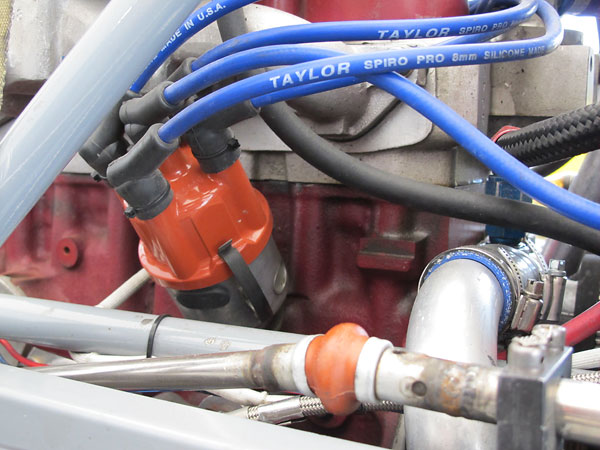
�
Taylor Spiro-Pro 8mm silicone spark plug wires.
�
(Nylon tie-wraps over cable boots are a nice detail.)
�
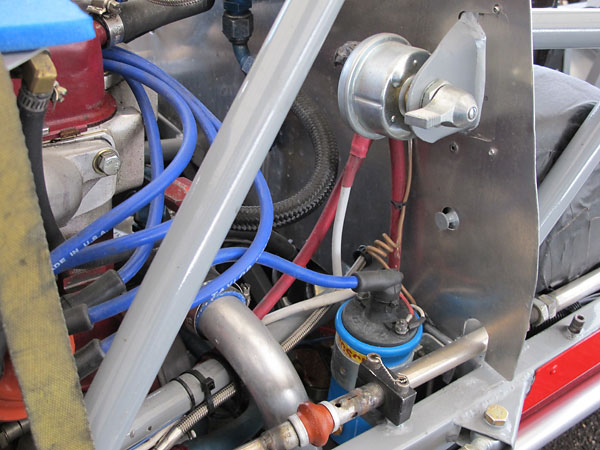
�
Bosch blue ignition coil.
�
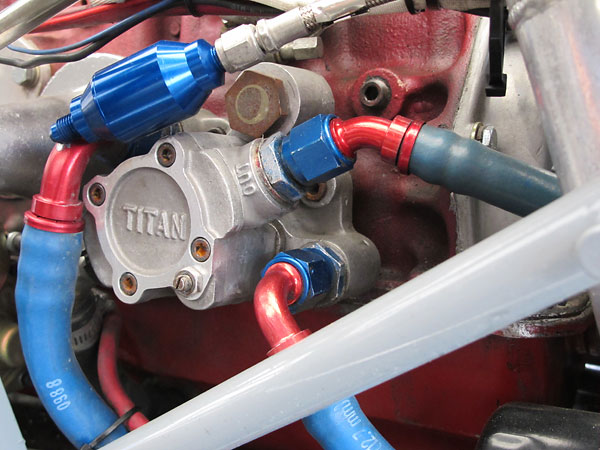
�
Titan oil pump.
�
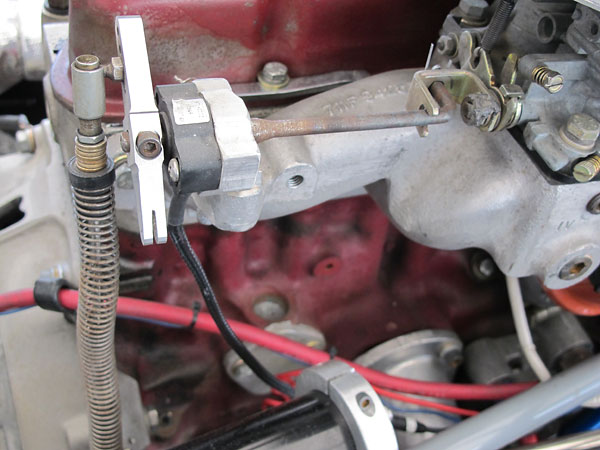
�
This throttle position sensor simply provides information to an onboard data acquisition system,
�
which the driver will download to a PC after the race and use to improve his driving strategy.
�
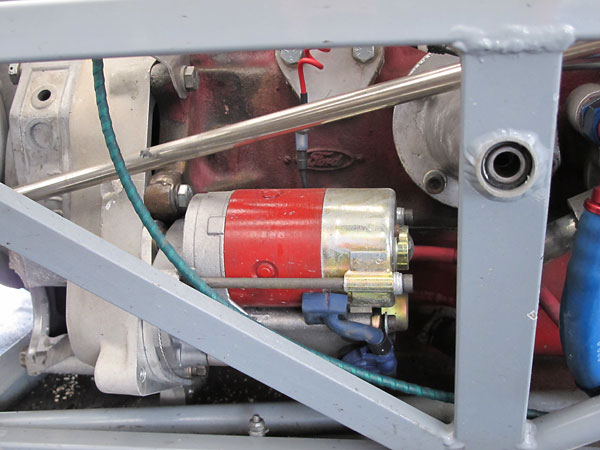
�
Starter motor.
�
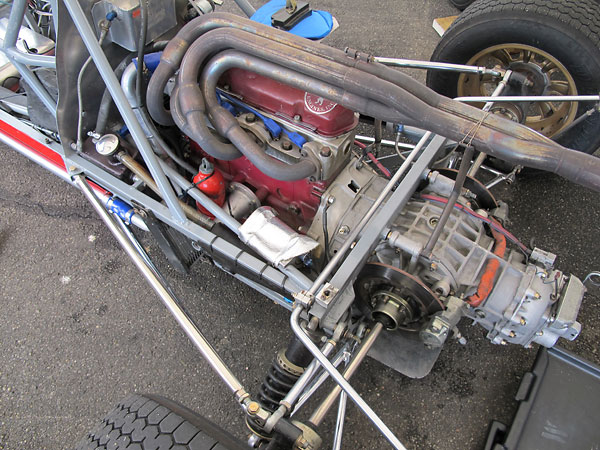
�
Hytech Headers stainless steel tri-Y exhaust header.
�
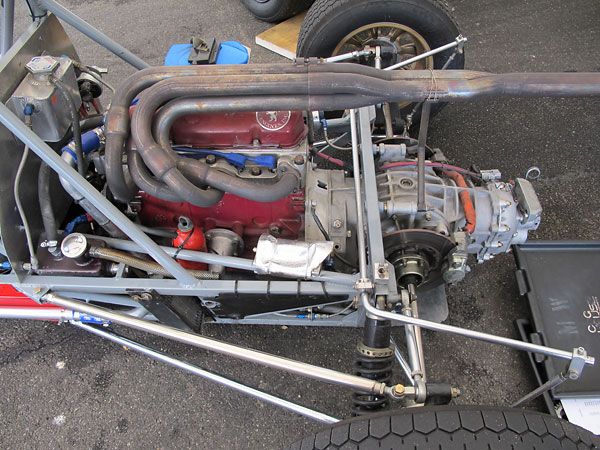
�
Based on extensive testing, Hytech advocates (non-traditional) sequential cylinder pairing.
�
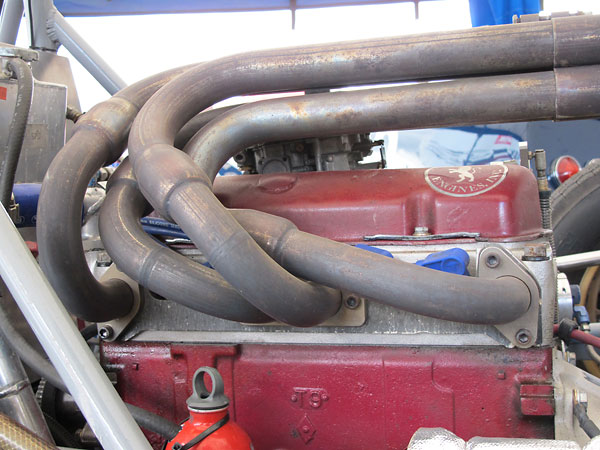
�
Hytech's patented anti-reversion chambers.
�
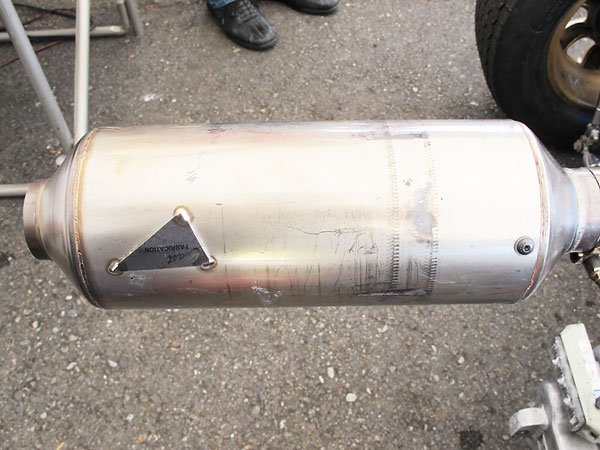
�
Where stricter sound control rules apply, Mark uses an unrestrictive
�
ultra-lightweight stainless steel muffler from Coast Fabrication.
�
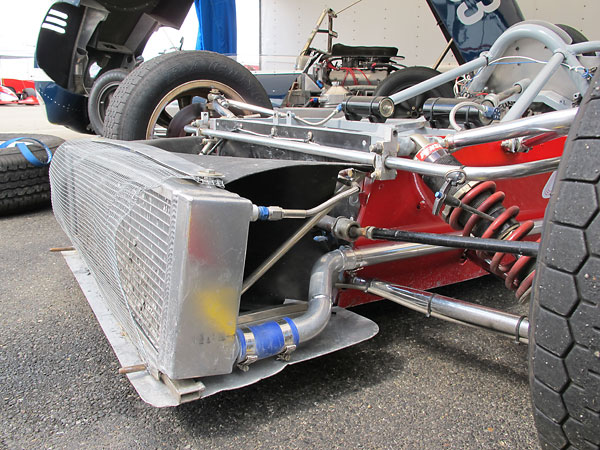
�
Howe aluminum crossflow radiator.
�
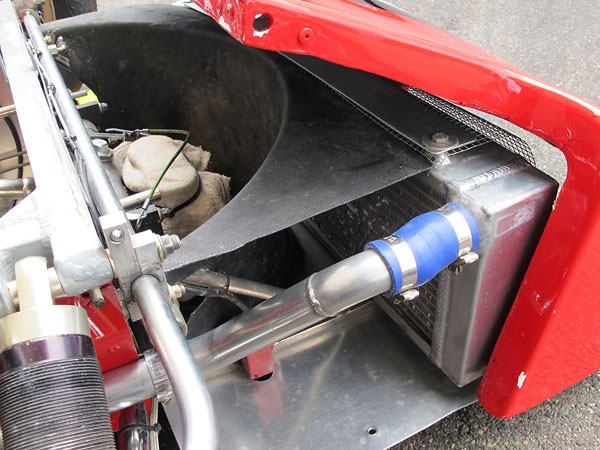
�
After passing through the radiator, airflow exhausts to the sides.
�
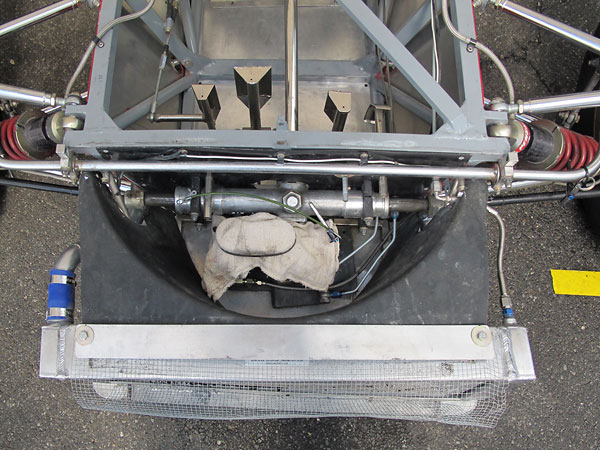
�
Master cylinders.
�
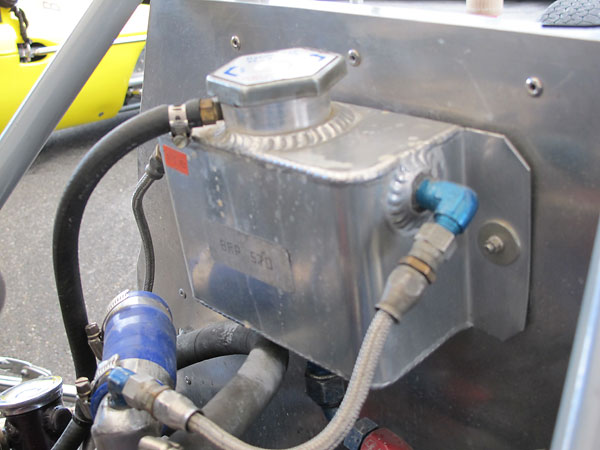
�
Bicknell Racing Products aluminum coolant surge tank (model 570).
�
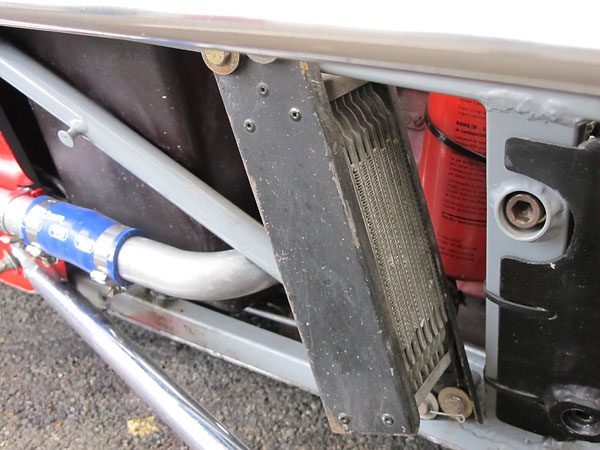
�
Aluminum oil cooler.
�
�
Front Suspension
��
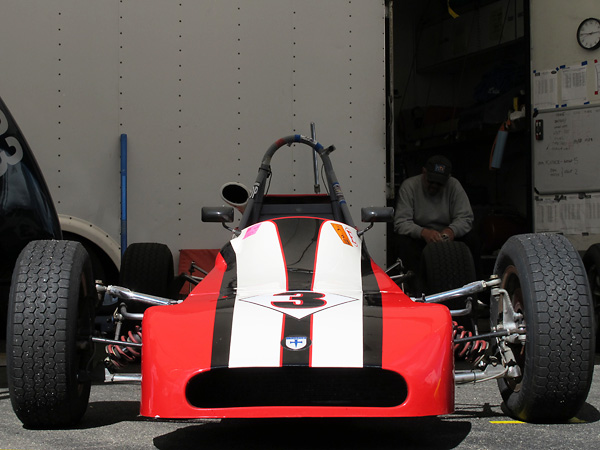
�
The Crosslé nose cone serves as a fairing for the car's externally mounted coilover shock absorbers.
�
This design approach would quickly become obsolete. In the early eighties, springs and dampers
�
moved inside the frame, uprights were tucked deeper into wheels, and radiators were relocated to
�
behind drivers' seats. The era of serious Formula Ford streamlining was just about to begin!
�
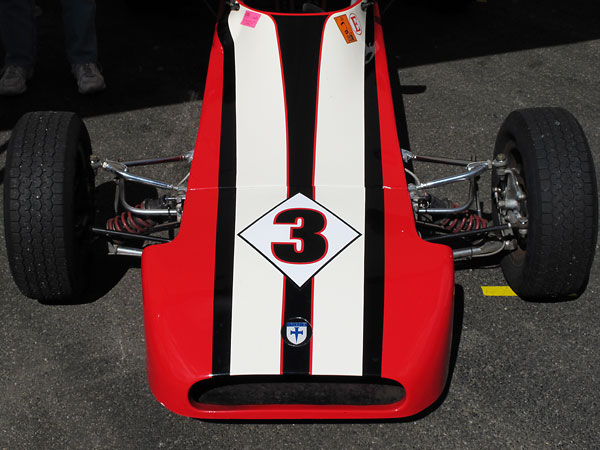
�
1600cc Formula Ford class rules have always forbid use of wings to produce aerodynamic downforce.
�
Clever designers have nonetheless put a lot of attention, beyond streamlining, into achieving some
�
measure of downforce without accumulating excess drag force. Crosslé 32F and 35F cars are some of
�
the most recognizable in Formula Ford due to their distinctive noses, which illustrates this balance.
�
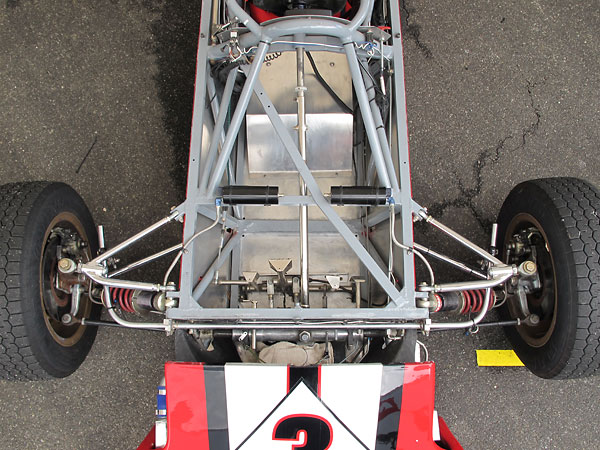
�
Front suspension pick-up points are strategically placed at nodes in the frames layout.
�
(Note: the diagonal brace above the footbox has been replaced. The original was straight, not bent.)
�
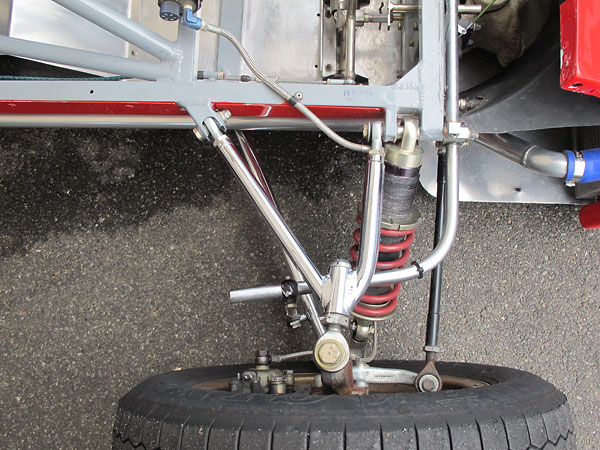
�
An unusual arrangement: outboard shock absorbers are usually oriented perpendicular to a car's
�
longitudinal axis, designers usually prefer as wide a base for suspension wishbones as feasible,
�
and bends along the legs of wishbones are usually avoided. What were they thinking?
�
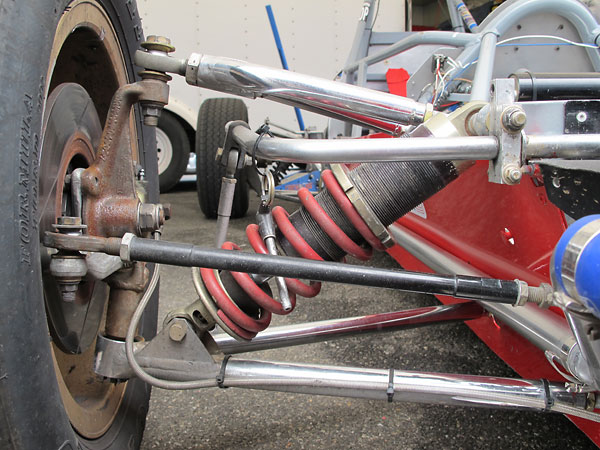
�
Notice that the Penske shock absorbers are mounted "upside down" in that the shaft end is downward.
�
(These are nitrogen gas-filled shocks, so they can be mounted in any orientation. There's less unsprung
�
weight when mounted this way.) Rebound adjustment is made at the bottom end of the shaft by inserting
�
a thin screwdriver into the small opening and "sweeping" an internal shaft clockwise or counterclockwise.
�
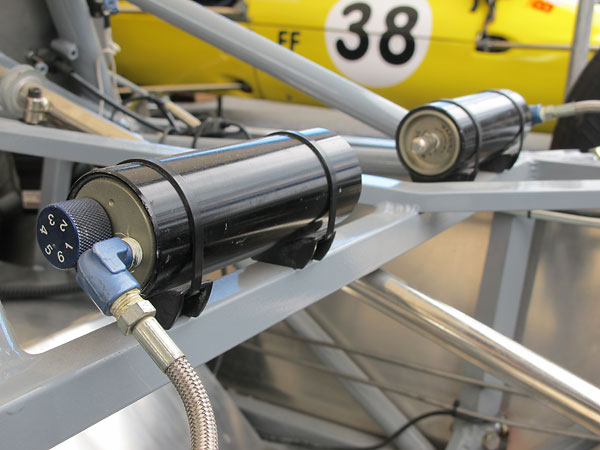
�
Penske 8100 Series remote shock absorber reservoirs. A piston within each reservoir separates the
�
oil-filled (dial) end from a charge of nitrogen gas. Compression adjustment is made via a dial on the
�
remote reservoir which selects one of six orifice sizes. ("One" is largest and thus softest.) Gas pressure
�
is typically about 175psi, but altering the gas pressure provides additional adjustment.
�
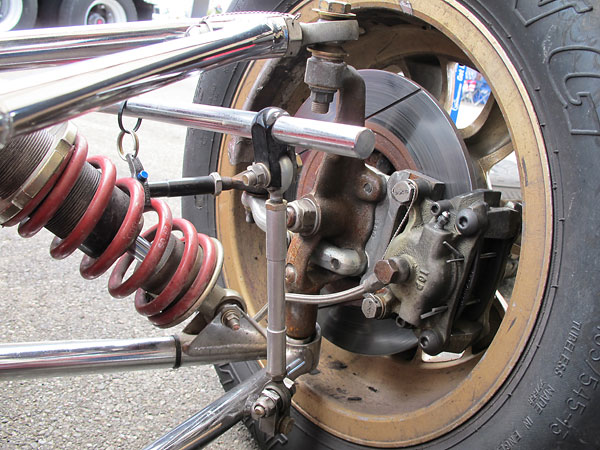
�
ICP20 leg-mount iron brake calipers squeeze iron solid brake rotors.
�
�
Enjoying this article? www.BritishRaceCar.com is partially funded through generous support from readers like you!
�
To contribute to our operating budget, please click here and follow the instructions.
�
(Suggested contribution is twenty bucks per year. Feel free to give more!)�
Rear Suspension
��
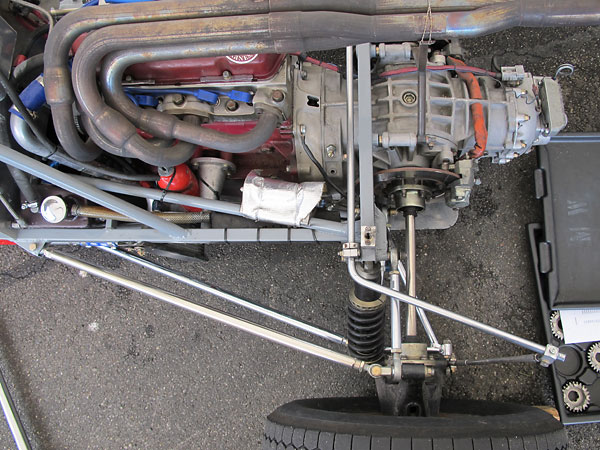
�
For racing on a damp track the rear anti-sway bar has been adjusted to its softest setting.
�
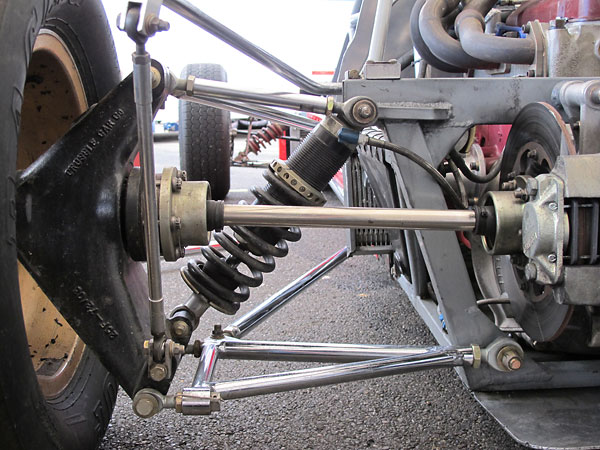
�
Beginning in the 70s, constant velocity joints became commonplace and cost effective with increased
�
popularity of front wheel drive economy cars. By 1979, Crosslé was installing CV joints on new
�
Formula Ford racecars. Despite a premium initial cost, these parts are reckoned maintenance free
�
for the life of the racecar (unless contaminated by grit.) Earlier vintage Formula Fords are required
�
by class rules to instead use Metalastik rubber drive "doughnuts".
�
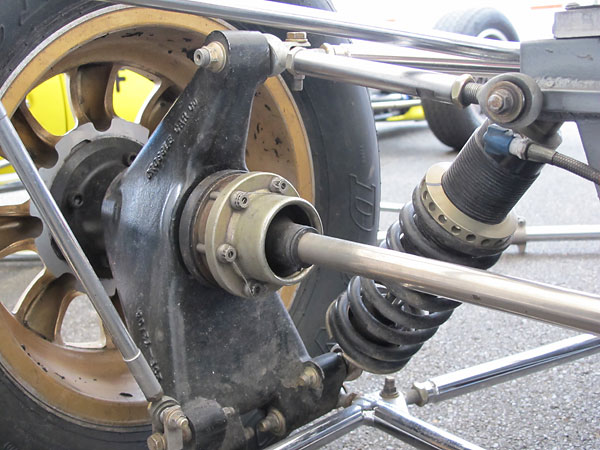
�
Proprietary Crosslé (25F-72/03) magnesium uprights.
�
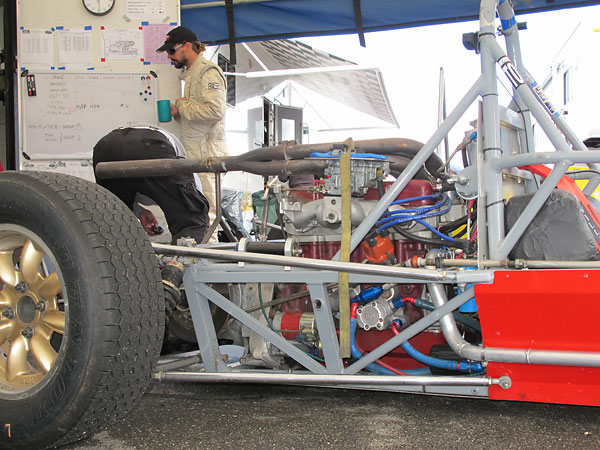
�
Long upper and lower trailing links were a ubiquitous feature of British open-wheel racecars
�
since about 1960. In the early eighties this began changing. Crosslé traded-in upper links
�
for a rocking lever arm design in 1985 on their 60F model. Lower trailing links stayed much later.
�
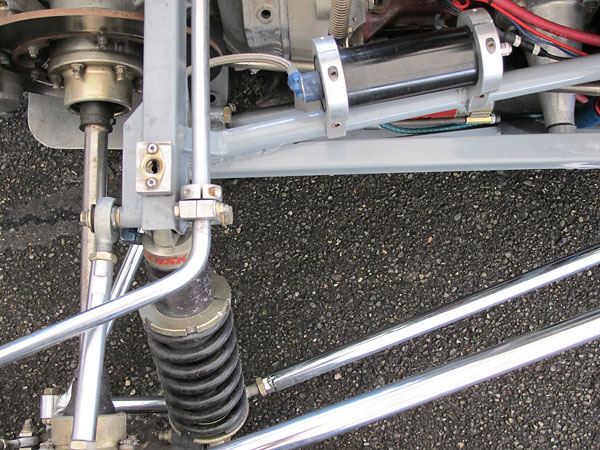
�
Penske Racing Shocks (PRS) shock absorbers with remote reservoirs.
�
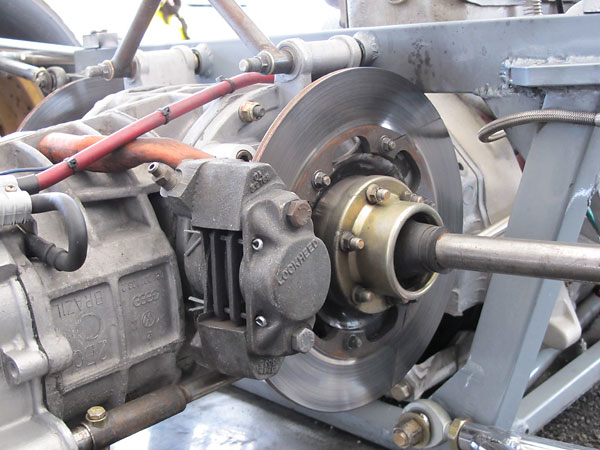
�
Inboard mounted rear brakes, featuring lightweight Lockheed calipers.
�
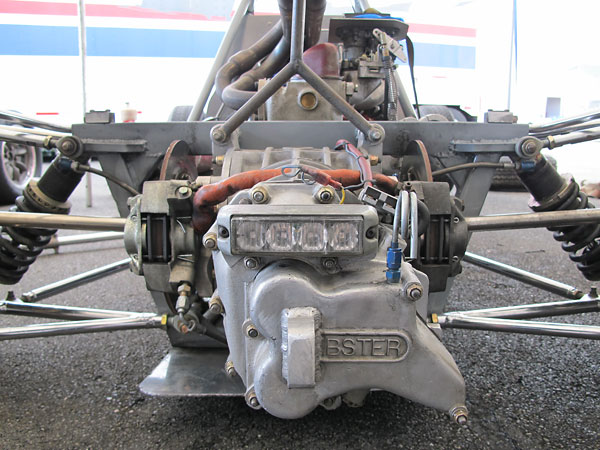
�
Webster Gears is an American company that has produced replacement parts for Hewland
�
transaxles since 1976. They've also produced complete custom gearboxes.
�
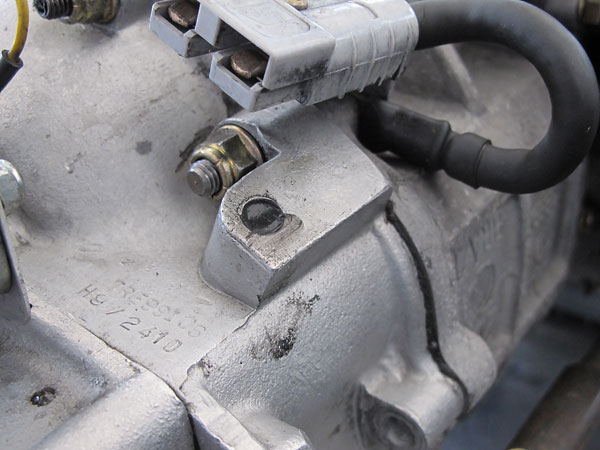
�
Taylor Race Engineering: 99106
�
Hewland: H9/2410
�
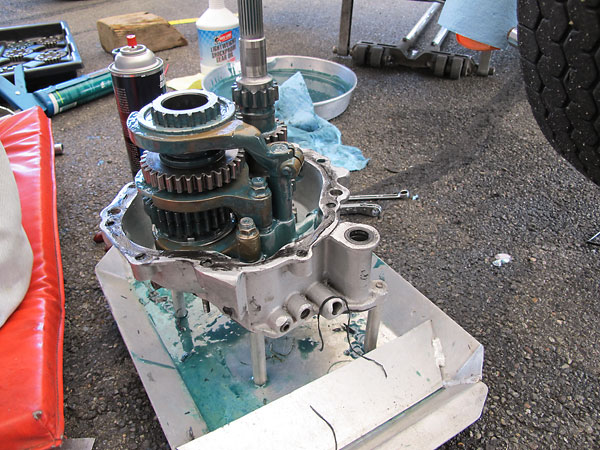
�
Until a racecar is driven at speed on a particular racetrack, it's very difficult to anticipate what
�
combination of gear ratios will suit best. Hewland transaxles makes gear swaps easy.
�
Frame Reinforcement
��
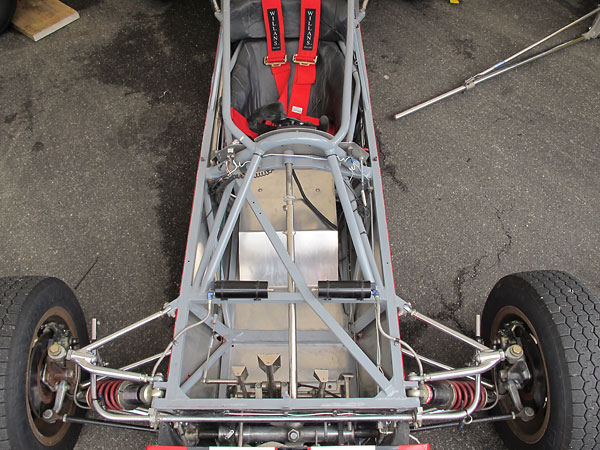
�
Substantial modifications have been made to this Crosslé 35F's frame. The forward roll hoop has
�
been replaced with one of similar height, but with braces attached on either side, instead of at the top.
�
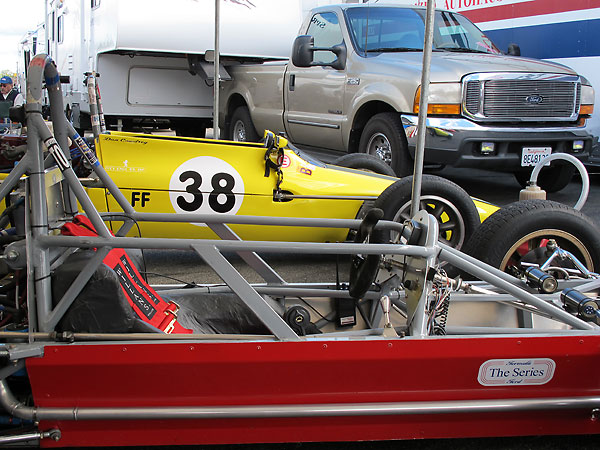
�
More importantly, two long curved tubes have been added around the cockpit opening.
�
This popular modification improves the frame's rigidity and its crashworthiness.
�
�
Interior
��
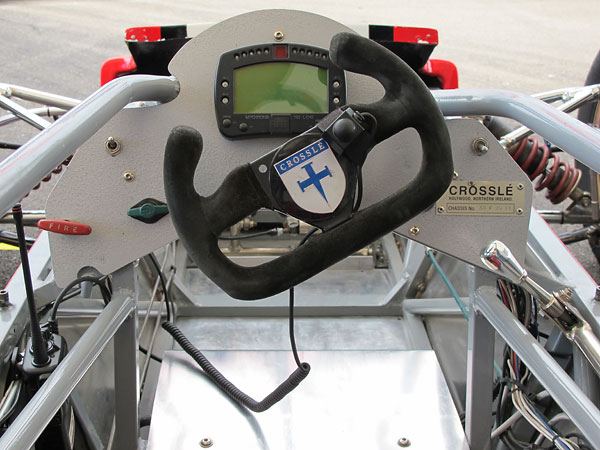
�
MOMO suede 250mm flat-bottom, cut-off top steering wheel.
�
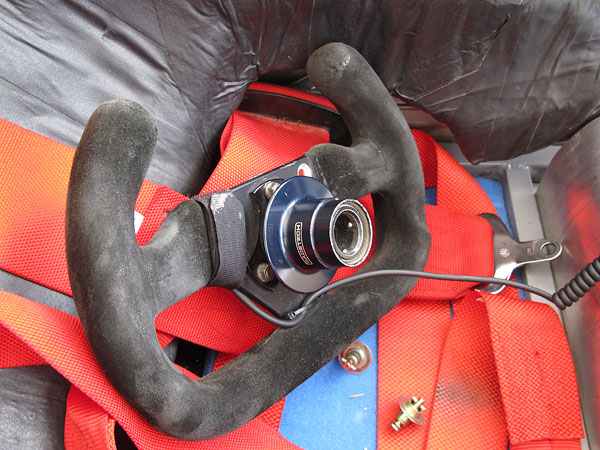
�
Racetech quick release steering wheel hub.
�
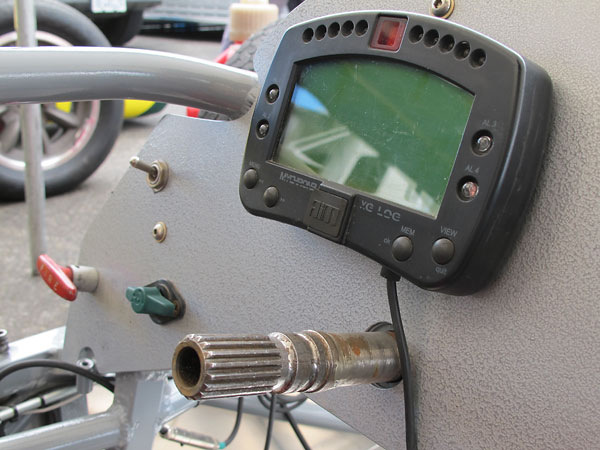
�
The MyChron3 XG LOG is more than digital instrumentation; it's the hub of a sophisticated data
�
acquisition system with five fully configurable input channels plus a built-in lateral G-sensor. The
�
data logger features a 200Hz sampling and recording rate, and stores data in an 8MB buffer. The
�
user can connect sensors for temperature readings, fluid pressure readings, potentiometers (e.g.
�
suspension travel, pedal displacement, steering angle, roll angle, etc.), Lambda air/fuel ratio values,
�
etc. The G-sensor helps users correlate other data to track position. Using powerful included
�
software, the system automatically creates a virtual map after data is downloaded to an offboard
�
personal computer.
�
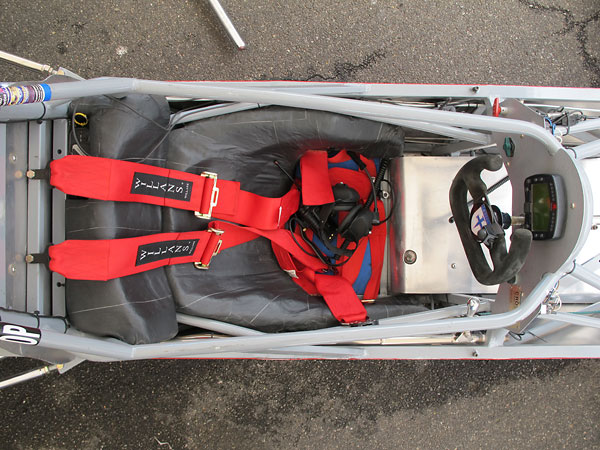
�
Willans six point cam-lock safety harness.
�
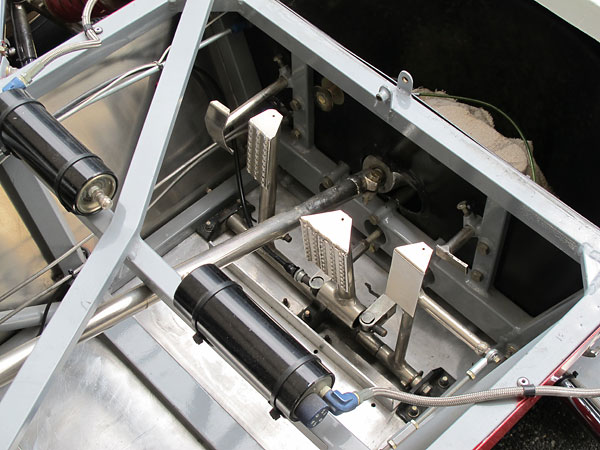
�
All the pedals pivot on a common bar, and the driver's heels rest against a common stop.
�
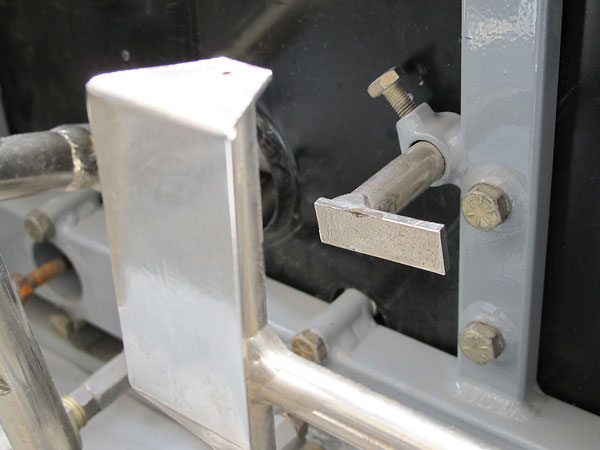
�
A pedal stop on the throttle pedal. This can be carefully adjusted so that the throttle opens fully
�
yet never goes over center. Installed at this end of the cable, not at the carburetor, the
�
throttle cable won't be stretched if the driver puts his weight on the pedal.
�
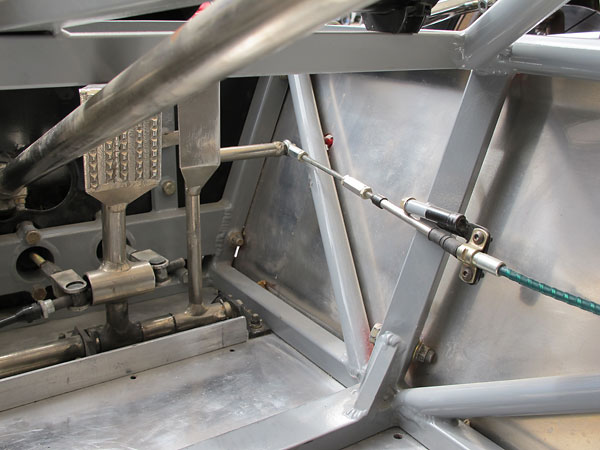
�
Throttle pedal/cable connection.
�
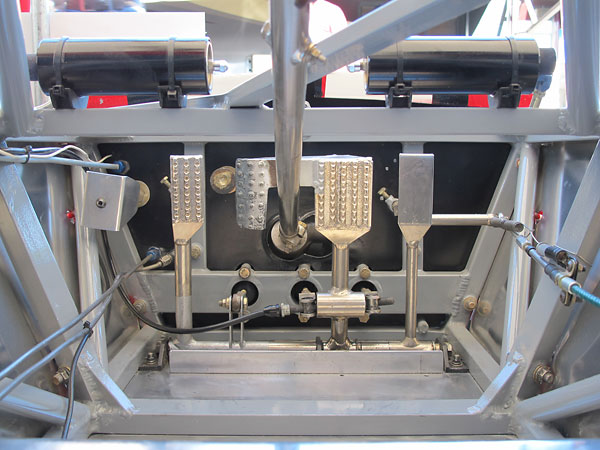
�
Between our two photography sessions, Mark has had one aspect of the chassis updated: it's now set-up
�
for left foot braking. The clutch and brake pedals have both been modified. Now the brake pedal can be
�
reached by the driver's left foot without him having to move his foot across underneath the steering column.
�
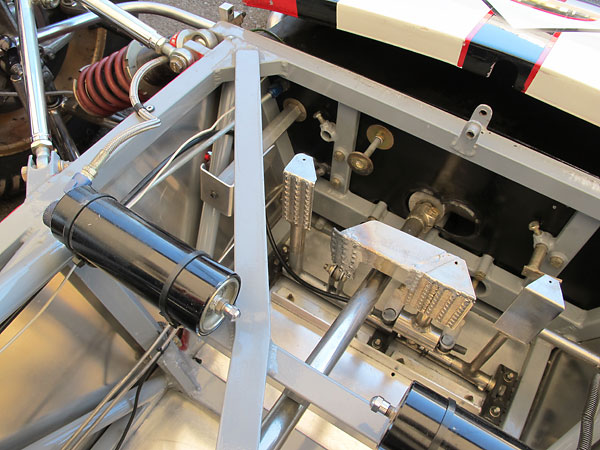
�
A new dead pedal for bracing the left foot has been added, although only needed when right foot braking.
�
The revised clutch pedal is no longer aligned with its old positive stop. The usual reason for having such a
�
stop in the first place is to protect the clutch slave cylinder from seal damage due to hyperextension.
�
(Depending on the mechanics of the system, a positive stop may be unnecessary.)
�
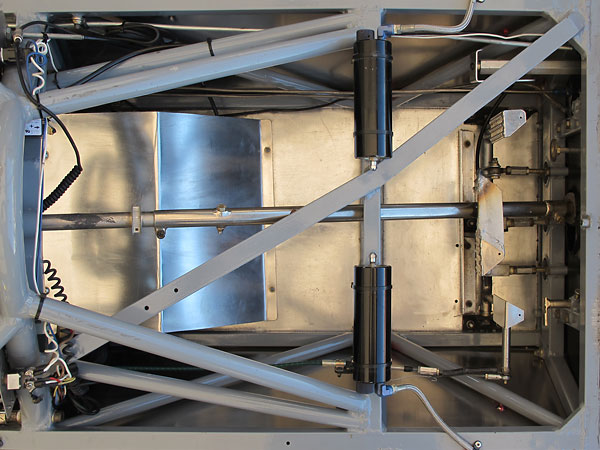
�
A simple aluminum panel hides and protects the battery and the fire suppression system bottle.
�
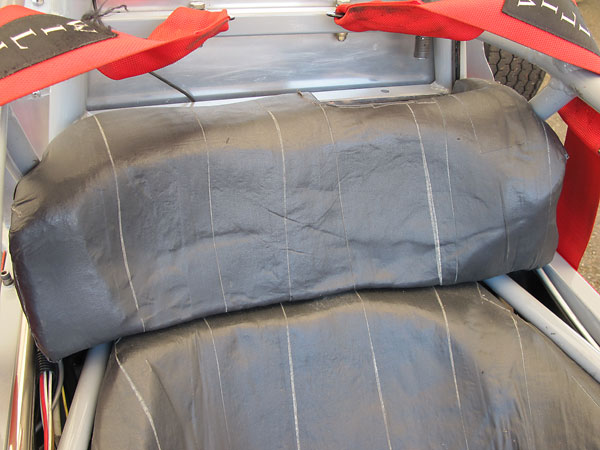
�
Comfy, custom-molded two piece foam backrest.
�
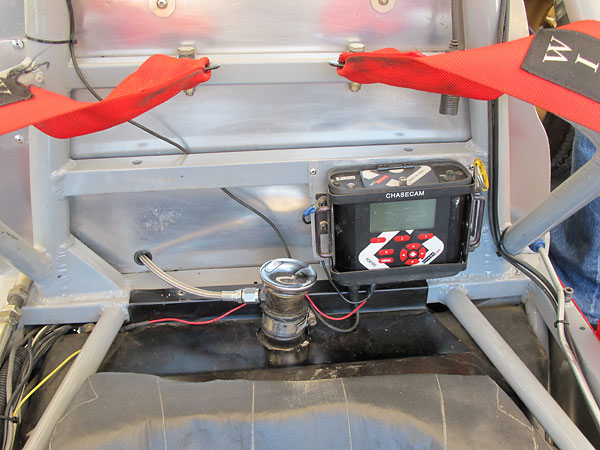
�
A Chase Cam PDR100 digital recorder has been mounted above the fuel cell, and discretely
�
behind the driver's backrest This device stores camera data, for playback after the race(s).
�
�
Exterior
��
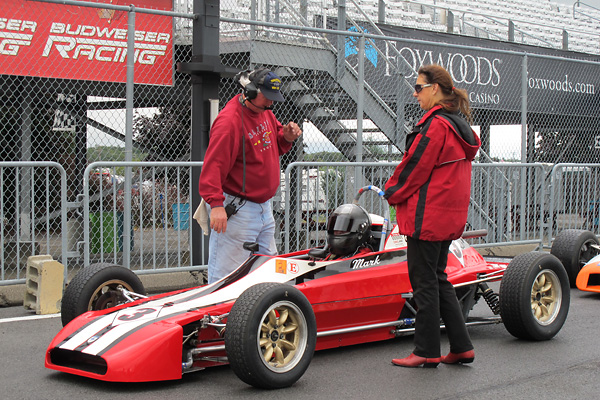
�
Roland Johnson prepares Mark Weatherup and his Formula Ford for each race.
�
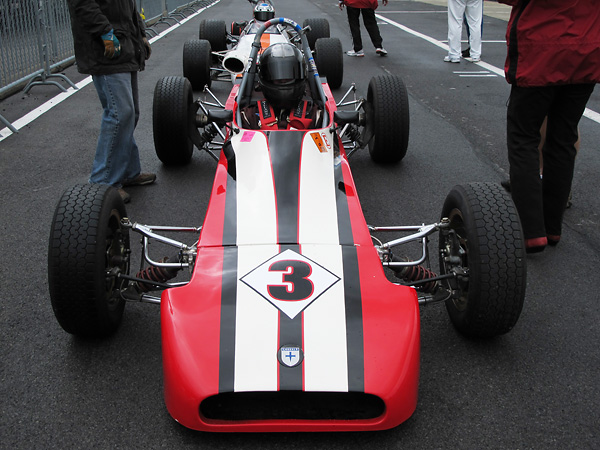
�
A similar nose - except much wider - was used on Crosslé's 33F Formula Ford 2000 model.
�
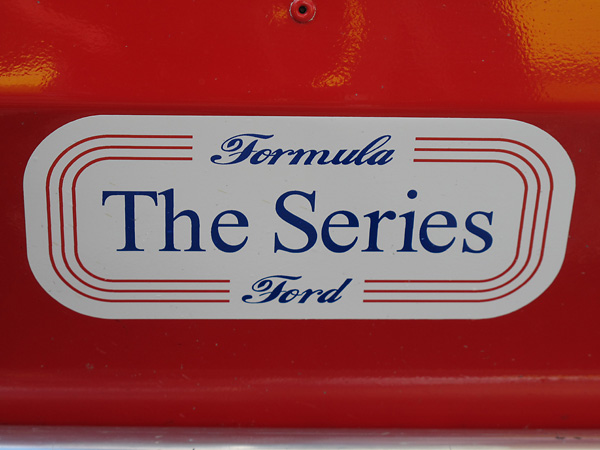
�
Formula Ford / The Series
�
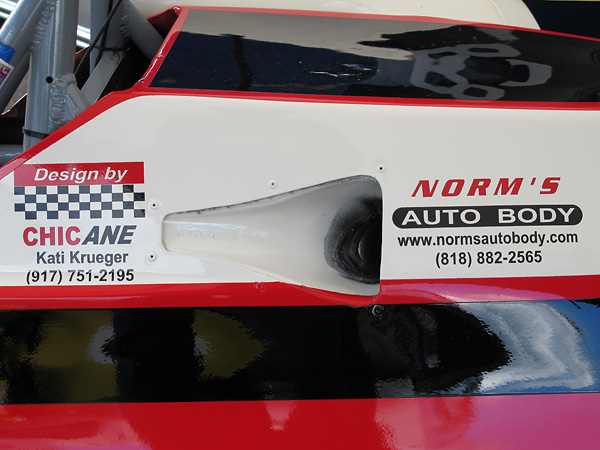
�
Design by CHICANE - Kati Krueger - (917) 751-2195
�
Norm's Auto Body - www.normsautobody.com - (818) 882-2565
�
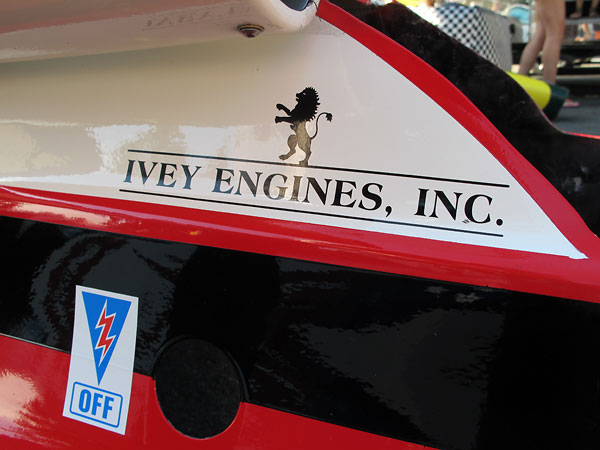
�
Ivey Engines, Inc.
�
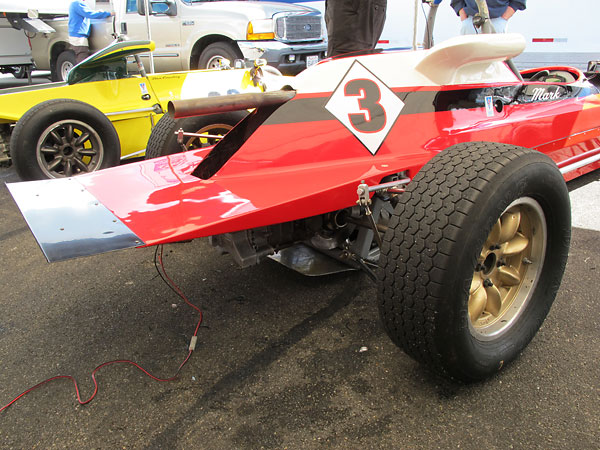
�
This extended engine cover isn't really a wing... but it may produce a little downforce.
�
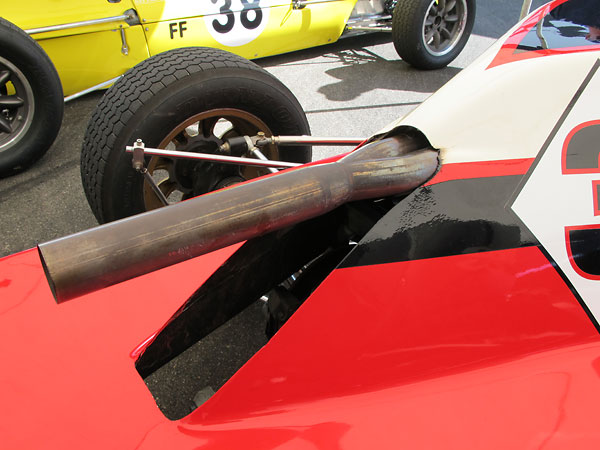
�
Normally the exhaust on a Crosslé 35F comes through the bodywork on the lefthand side,
�
but this modification - with exhaust coming straight out the back - sure looks nice!
�
�
Unless otherwise noted, all photos shown here are from September 2010 when we viewed the car at�
The US Vintage Grand Prix at Watkins Glen. All photos by Curtis Jacobson for BritishRaceCar.com,�
copyright 2011. All rights reserved.
�
| If you liked this article, you'll probably also enjoy these: | �|||||
 | �
Kyle Kaulback 1971 Lotus 69 | �
 | �
Scott Fairchild 1972 Royale RP3A | �
 | �
Gord Leach 1974 Hawke DL11 | �
| You're invited to discuss anything you've seen here on The British Racecar Motorsports Forum! | �|||||
�
Notice: all the articles and almost all the photos on BritishRacecar.com are by Curtis Jacobson.
�
(Photos that aren't by Curtis are explicitly credited.) Reproduction without prior written permission is prohibited.
�
Contact us to purchase images or reproduction permission. Higher resolution images are optionally available.
�

 �
�